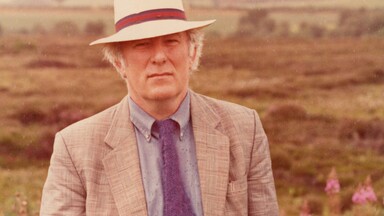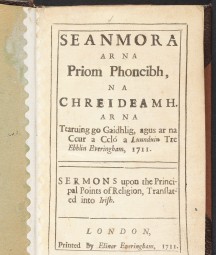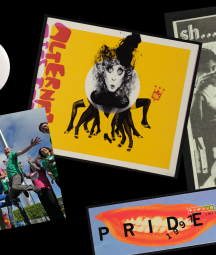Through a series of talks, panel discussions and tours, we've seen the journey this landscape has had on the poet's work across his entire career. Patrick Kavanagh, a major inspiration for Seamus Heaney and a poet with a remarkable feel for rural life, once said that "a man that cannot find happiness and contentment in a turf bog is a bad case." Needless to say, I don't think Heaney could be considered to be a bad case!
Even as early as Death of a Naturalist's 'Digging', Heaney hints at the relationship he will have to the bog, how there is no alternative but to dig down and down, for here he will find his history as the land preserves it and provide him with poetic inspiration. Heaney cannot follow his forefathers in agriculture but will dig nonetheless, take from the earth nourishment, even if it is of a literary kind rather than a literal kind.
In his next collection Door into the Dark, its final poem 'Bogland' widens the scope of the bog from a personal meaning to a communal one. 'Bogland' can be seen as a response to Theodore Roetke's ‘In Praise of Prairie’. Heaney's 'Bogland' provides a deliberate counterpoint to Roethke's 'Prairie' - the prairie is the mythological landscape of America, looking outwards and upwards, the lines of the poem wide and flat as the landscape. Heaney, by contrast, has his bogland striking inwards and downwards, the narrow lines digging deeper. Whereas Roethke's poem has a definitive final word - end - Heaney's bog is bottomless. It being the final poem in the collection suggests the start of a new exploration of this topic.
Door into the Dark was released in 1969. In the same year, Heaney read archaeologist PV Glob's book The Bog People about bog bodies discovered in Denmark that were assumed to be sacrifices to an Earth goddess, Nerthus, for a good harvest. In the same year, the Troubles formally broke out in Northern Ireland in Derry's Bogside. These two events coloured Heaney's treatment of the bog for the next decade. In Wintering Out's 'The Tollund Man' are the seeds of Heaney's treatment of the bog as a metaphor for the violence in Northern Ireland. Heaney driving away is struck by the irony of being in a land far from home, with a language he cannot speak, yet the violence is ever so familiar given what was routinely happening in Ulster. Home here is not a word of cosy comfort but of alienation and despair. Nowhere is this more evident than in 'North'. One of the most direct and striking pieces is 'Punishment', where a description of a woman’s body in a bog, who was assumed to be killed for adultery, is compared to a Catholic woman tarred and feathered in Northern Ireland in the early 1970s, accused of fraternising with a British soldier.
Thirty-four years later, Heaney revisits the Tollund Man in District and Circle. With this in mind, Heaney goes back to see his Tolland Man anew. Heaney's concern now is not the link between Iron Age and late 20th Century violence but on the tension between a closer-to-nature past and the polluted modern present. With this poem, we see how the bog has over the decades changed for Heaney, starting as a personal history – a connection to his father – to a symbol of the uncertainty and violence rising in Northern Ireland to a lament for ecological issues.
-----
Interested in learning more about Heaney's poetry? Visit our free exhibition Seamus Heaney: Listen Now Again.


